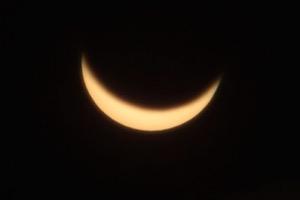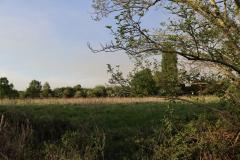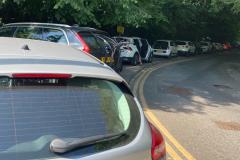
Western Europe has its first total solar eclipse in more than 15 years in the morning of Friday 20th March. The region where the eclipse is total, however, only makes landfall in two places; in the Faroe Islands north of Scotland and in the Svalbard archipelago in the high arctic. Observers in these places will see the total phase of the eclipse last for up to two minutes. The rest of Europe, including here in the UK, will see a partial solar eclipse.
A solar eclipse occurs when the Moon passes in between the Earth and the Sun, blocking out the light from the Sun for up to a few minutes. An eclipse doesn't happen every time the Moon is between the Earth and the Sun as the Moon's orbit is tilted with respect to that of the Earth. Most of the time, therefore, the Moon will pass either above or below the Sun. We only see an eclipse when the alignment is perfect.
A total solar eclipse occurs roughly once every 18 months somewhere on Earth, but the path of totality can be only a few tens of miles wide, so it's quite rare for any one place to have a total solar eclipse. For instance, Wilmslow hasn't had a total solar eclipse in 875 years, since the year 1140, and there's not one due for another 136 years until the year 2151. The next one to cross the UK's shores is in the year 2090.
This time in 2015, with the eclipse path just north of Scotland, we will see a very deep partial solar eclipse with approximately 90% of the Sun's light blocked out by the Moon at the maximum point, so it should still be a very interesting event.
The eclipse will take place in the morning of 20th March 2015. First contact, where the Moon appears to take the first "bite" out of the right-hand limb of the Sun, will take place at 08:26. The maximum point of 90% coverage is reached by 09:31, with only a thin crescent Sun left at the bottom. The eclipse will end at 10:41. The overall event will therefore take about 2 hours 15 minutes from start to finish. These timings are correct for Wilmslow.
Those intending to watch the eclipse will need to make sure they are doing so safely. Looking directly at the Sun can seriously damage your eyesight or cause permanent blindness unless you have the correct eye protection, and you should especially never look directly at the Sun through binoculars or a telescope. You will need to use a proper solar filter or specially made solar eclipse glasses for looking at the Sun directly. Sunglasses are not enough, and even normal shade welding glasses won't give you the right level of protection. Welding glasses need to be at least shade 14 for solar viewing, but these should not be combined with a telescope or binoculars.
A safer method is to project an image of the Sun onto a piece of paper, for instance using a simple pinhole camera, rather than observing the Sun directly.
There is one final thing to watch out for. Near the time of maximum partial eclipse, whilst most people are looking upwards, there is something interesting to see by looking downwards too. The small gaps between leaves and branches of trees act a bit like a pinhole camera and in each gap will be projected a mini image of the Sun onto the ground. Consequently, you may be able to see hundreds of little crescent Suns in the shadows on the ground. If you haven't got any suitable trees nearby, you can make some gaps using your hands to simulate this effect.
Let's hope the weather stays cooperative. If on the day it is cloudy, then there are likely to be several live-streams available where you can watch the eclipse online. If you miss the eclipse in 2015 then you will have to wait until 2026 to see another 90% partial eclipse from the UK.
Guest post by Richard Bullock.










Comments
Here's what readers have had to say so far. Why not add your thoughts below.